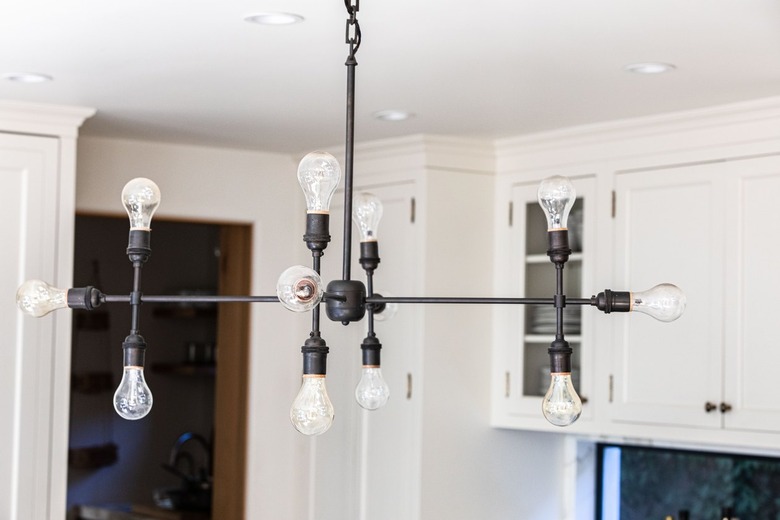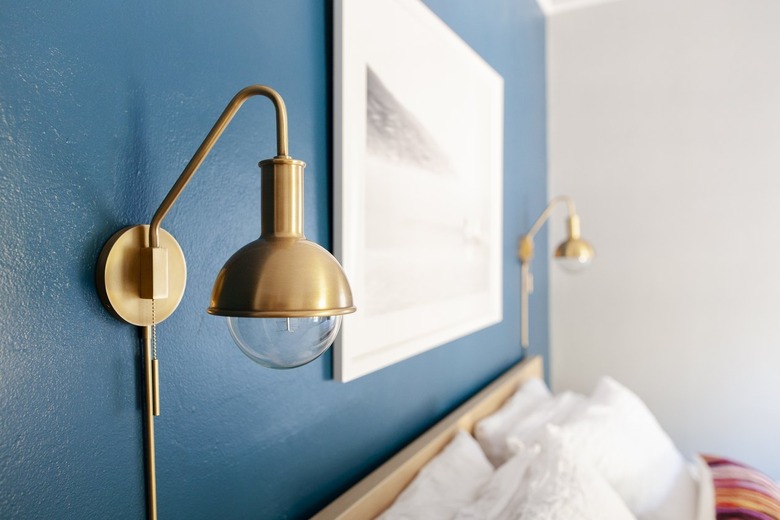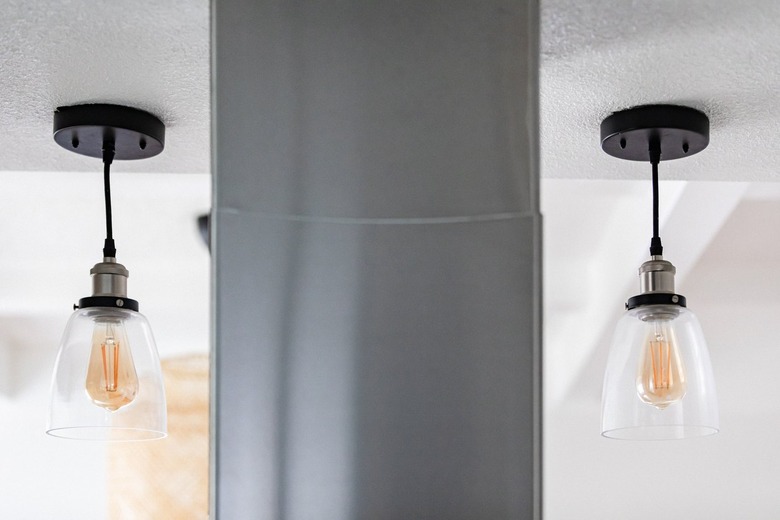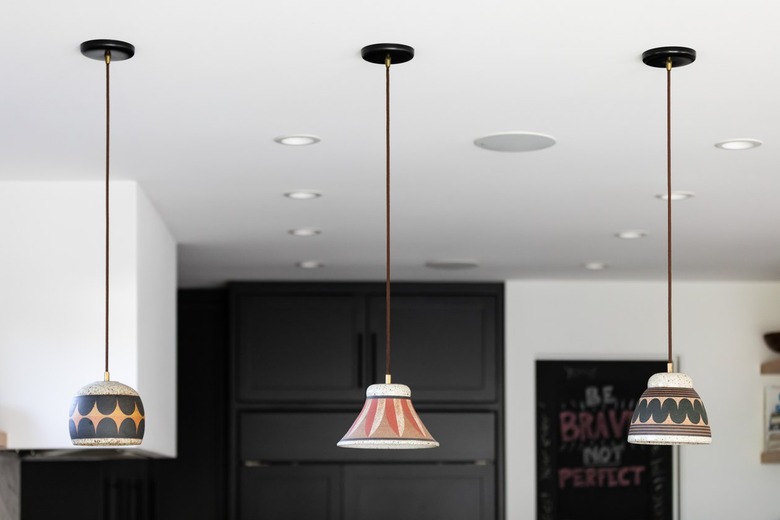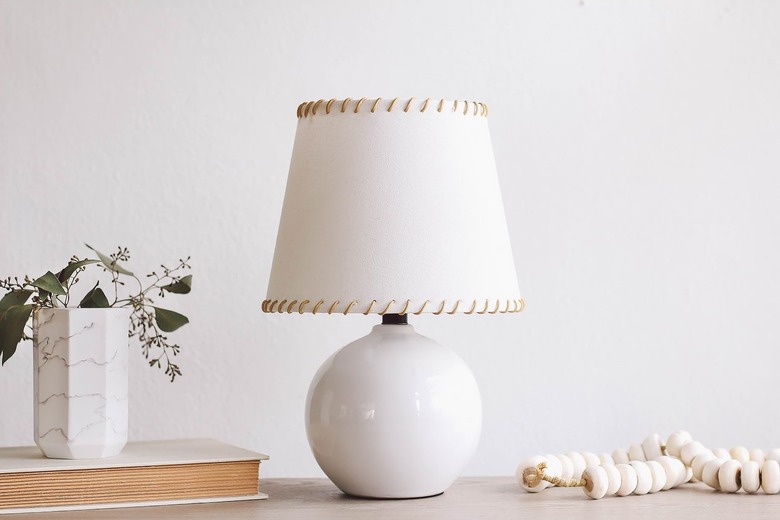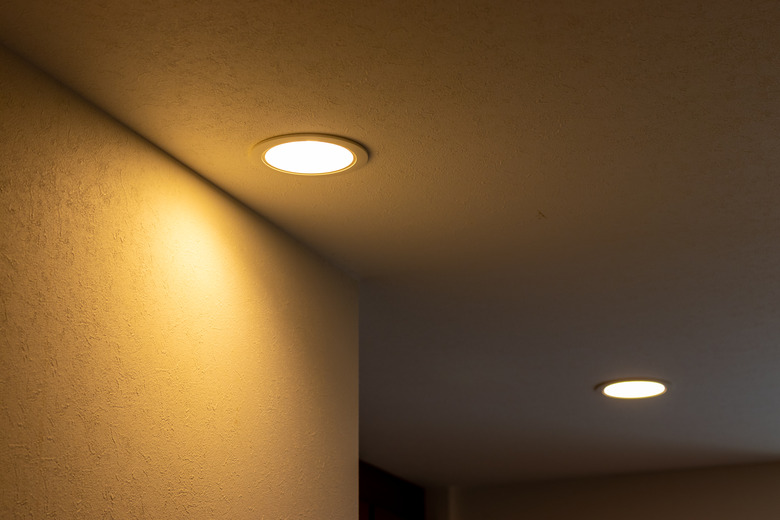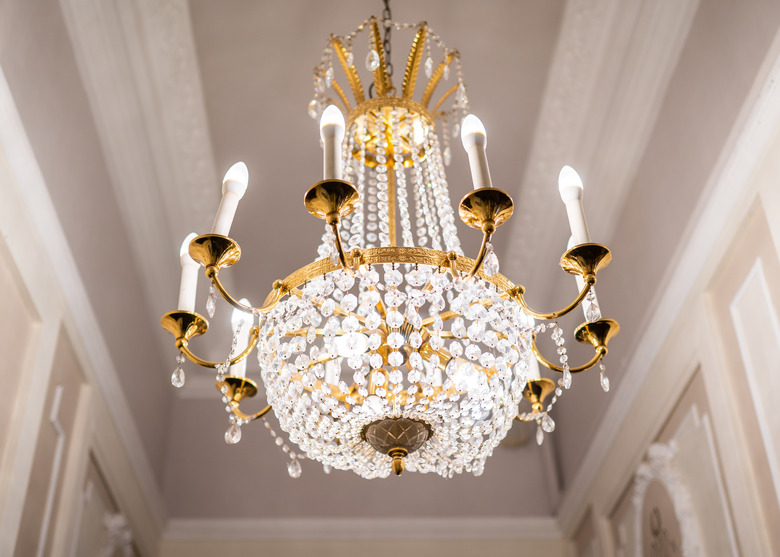How To Clean Light Fixtures Of All Kinds
We may receive a commission on purchases made from links.
Clean light fixtures not only make your home look well maintained, but they also make it brighter. A dirty bulb can look 30 percent dimmer than a clean one thanks to built-up dirt and grime, and if it is covered by a dirty glass globe or a dusty light shade, it will look even darker. A weekly dusting can slow dust accumulation, but it's best to give your light fixtures a deep cleaning every six to 12 months to keep them looking as bright and clean as possible.
How to Dust Light Fixtures
How to Dust Light Fixtures
Once a week, use an extendable microfiber duster to clean any dust buildup or cobwebs from your lights. Use a step ladder and a dry microfiber cloth if you don't have an extendable duster. You may need a full-size ladder to clean fixtures very high off the ground. Go around the top, sides, and bottom of any exposed light bulbs, glass covers, light shades, and ceiling fan blades to remove as much dust as possible.
How to Deep Clean Light Fixtures
How to Deep Clean Light Fixtures
For most light fixtures, the cleaning process is pretty simple. You'll need to disassemble pieces as necessary and then wipe down the rest of the fixture. Deep cleaning should eliminate dust, cobwebs, and other types of grime.
- Remove glass light covers, globes, or light shades from
the fixture as needed. Set these aside to be cleaned separately. - Remove the bulbs and use a dry cloth to remove any
baked-on dust from the light's surface. Do not rub too hard or you could
shatter the glass. If a bulb is too dirty to clean easily, you may need to
replace the bulb. When you're finished, set the bulbs aside. - Use a dry cloth to
go over the rest of the fixture, including any switches. If any grime remains, spray a mixture of one part white
vinegar and three parts water on a microfiber cloth and use it to clean away the stubborn
stains. Never apply cleaning solutions directly to the fixture; always apply
them to a cloth and then use the cloth to wipe the fixture. - Allow the fixture to fully dry before reinstalling the bulbs,
glass covers, globes, or shades.
How to Clean Light Covers
How to Clean Light Covers
While you can use a damp cloth to clean minor dust buildup, tough grime and baked-on dust may require mild dish soap. Glass pieces that cannot be removed can be cleaned with gentle glass cleaner, but never apply the solution directly onto the light fixture because it could cause damage.
- To remove a glass globe or shade, firmly support the glass with one hand while removing
the screws or clamps with the other. Keep holding the piece upright until you are positioned over a trash can. Then, dump out any loose dirt or dead bugs. - If you're using any cleaning product, test a small amount
on an inconspicuous area of the light cover before cleaning the rest of the
surface because certain detergents can damage some glass finishes, removing coatings, or making them
look cloudy. - For covers with only a little dust or glass with an
easily damaged finish, use only water and a cloth to wipe away buildup. - To get a deeper clean on less-delicate glass finishes, fill
a bucket or your kitchen sink with warm water and mild dish soap. Let the fixture soak
for a few minutes. - Use a sponge to softly scrub away the grime and then use a
towel to dry the cover.
How to Clean Light Shades
How to Clean Light Shades
The proper method for cleaning a light shade varies based on its material. Most materials can be cleaned in a bathtub, but more delicate materials should be handled with care and may require the aid of a professional cleaner. These steps are appropriate for shades made of plastic or sturdy fabrics.
Light shades with silk, embroidery, beading, paper, parchment, and other fragile materials may be damaged easily and require special care. Use a duster or a soft, dry cloth to remove dust weekly. Silk, embroidery, and beading should be taken to a dry cleaner for deep cleaning. If soiled, paper shades need to be replaced.
- Remove surface dust with a vacuum's upholstery
attachment. - Add a single drop of detergent or dish soap to a sponge soaked in water and use this to test the fabric in a small,
inconspicuous area before submerging the shade in the water. - Prepare the soaking area by filling a bathtub with enough warm water to cover
the lamp shade and then apply a few drops of gentle laundry detergent or dish soap.
A teaspoon of baking soda can help brighten white lamp shades. - Submerge the shade in the
tub and then let it sit for 15 minutes before using a soft cloth to clean the
fabric gently. For pleated light shades, a paintbrush with soft bristles can
help you get in the crevices. - Drain the tub, fill it with warm water, and then rinse and submerge the shade again to remove any remaining cleanser.
- Allow the shade to fully dry by first shaking away excess water and then setting it on a
towel for a few hours (or overnight). It should be completely dry before placing it back on the fixture.
Tip
You can speed up the drying process by using a hair dryer on a low, cool setting.
How to Clean Recessed Fixtures
How to Clean Recessed Fixtures
Recessed lights, also called can lights, are the simplest type of light to clean because these ceiling lights have so few parts. Remove the light bulb and then use a dry microfiber cloth to wipe the inside of the canister, the trim ring, and other exposed elements. If any stubborn grime remains, apply a water and vinegar solution to the cloth and use this to remove the stain. Allow the surface to dry fully before putting the bulb back in place.
How to Clean Chandeliers
How to Clean Chandeliers
Most hanging lights, whether a chandelier or pendant light, can be cleaned just like regular light fixtures, only you'll also need to wipe down the downrod, chain, and cord with a damp cloth. Crystal chandeliers require special care, though.
You can disassemble an entire crystal chandelier (taking care to note where each pendant, saucer, and crystal goes) and then clean the pieces in warm, soapy water. But the easiest method is to clean the chandelier in place using a special drip-dry crystal cleaner and then remove any remaining stains with glass cleaner and cotton gloves. Always leave light bulbs in place when cleaning a chandelier with drip-dry crystal cleaner.
- Tighten the light bulbs to prevent
liquid from entering the bulb sockets. - Working from top to bottom, hold a spray bottle of crystal cleaner about 3 to 6 inches away from the chandelier and spray all surfaces
until the fixture is thoroughly coated. Do not spin the chandelier. - Because crystal cleaner cannot
remove grease, fingerprints, and other stains, these must be removed manually
with glass cleaner and cotton gloves. Spray the cleaner on one glove, use it
to clean the crystal, and then wipe dry with the other glove. This method ensures that
the crystals are left sparkling without fingerprints or water stains. - Allow the chandelier to dry for 90 minutes before turning it back on.
